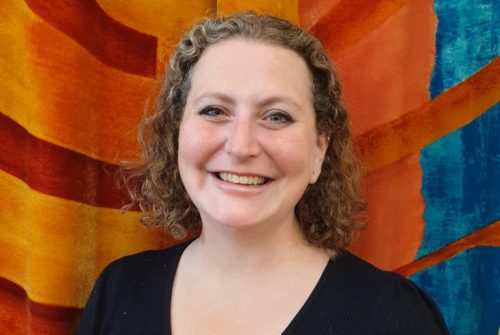It’s Shabbat of the Cow. Shabbat Parah. A strange name for a Shabbat, particularly as it is here to announce the approach of (say it quietly) Pesach. Why cows? Well in the first torah reading we heard Nurit read so beautifully this morning, we heard the wrath of God unleashed after the famous incident of the Golden Calf. That’s cow number 1, then in our extra scroll, especially for this week as we begin the countdown to Pesach, we heard about the Parah Adumah – the Red Cow or Red heifer as she’s more commonly called. To many of the sages this was considered one of the strangest, most difficult to understand parts of Torah. A pure red cow, with not a hair of a different colour, needed to be sacrificed in a special ritual, which rendered the Priest performing it impure. The ashes were then used in a separate ritual designed to purify members of the community from a particularly dangerous type of impurity – Tumat Met – impurity caused by contact with a corpse.
Don’t worry, this isn’t one of the portions where I can run amok talking about bodily functions and purity laws. We still have that to look forward to. But purity is an important theme this Shabbat. We read about the Red Heiffer because in the times of the temple, one had to be purified before Pesach in order to participate in the ritual of eating the Paschal lamb, so this is an announcement – we have a month to ready ourselves. Today of course we are not asked to purify ourselves physically before Pesach, but many of us will take time to do some spring cleaning – purifying our homes if you like. The process of cleaning our homes has jokingly been compared to the ritual of the red heifer – we start with a pure priest, and end up with an impure priest but a mixture than can purify the community. When we clean we start with a clean sponge and a dirty house, and hopefully end with a dirty sponge and a clean house!
Despite my fascination with all things related to Purity in Judaism, I’ve always felt uncomfortable with the idea of Spiritual purification- that isn’t how I understand the purpose of the Mikveh, or ritual bath, and I’m not convinced we are ever spiritually impure. But there is something in the preparation for Pesach that I find emotionally cleansing as well as the catharsis of a deep clean at home. In Biblical times the community cleansed themselves of impurity I believe, to protect one another from allowing disease to spread. Today, we clean out our homes, but are also meant to be preparing spiritually, a side of Passover that I think is often lost in the cleaning and preparing for seder.
There is a fascinating parallel that happens in the Jewish year, which I think is meant to remind us of things beyond the physical exertions of Pesach. Back at Rosh Hashanah, you may have taken part in a ritual called Tashlich. For those of you who haven’t ever tried it, it’s a way that we externalise our hope to change our behaviour. So we go to a river or a stream, and traditionally we throw bread into the river and with each crumb we try to name a sin we want to throw away and get rid of in our lives. We name them for ourselves, as part of the work of transformation we try to undertake through the high holidays.
But as we approach pesach, there’s another ritual we perform that gets rid of bread. We search for the last hidden crumbs around the house (which have often been hidden by parents for children to find). Having gathered them all up, we then have a sort of barbeque where we throw the breadcrumbs or chametz on, to watch them burn. The chametz is a symbol of that which we want to clean not only out of our houses, but out of our lives. My husband Gary and I will often gather around the barbeque and name out loud to each other the things we secretly threw in the river 6 months ago, at Rosh Hashanah, but named only for ourselves. If we are still struggling with them at Pesach, we will be braver, sharing our short fallings with one another, and symbolically burning them away. These kinds of rituals I call Spiritual Technology – they aren’t designed to spiritually cleanse us, but to psychologically walk the journey of life with us, opening us up to ourselves, the world we share, and the deeper meanings and connections we seek in this life.
The Parah Adumah or Red Heffer served as a helpful reminder that coming into contact with the dead was a bad idea. Dangerous for us, and dangerous for the community. It was a kind of public health policy designed to curb the spread of disease. But as we cleanse our homes and our lives in the lead up to Pesach, we have the opportunity to make this hard work mean something much more than just a chance to get rid of all the debris under the sofa cushions, and pocket the loose change under there. We are also able to take a moment to think about the debris and flotsam of our own lives, and perhaps in doing so, we might come away with a bit of small change to spend on our own happiness and growth.
Pesach is coming, but it’s announcement today isn’t a warning of hard grind, it is an opportunity to renew, replenish and regenerate. It is an annual opportunity to embrace the spiritual technology Judaism offers us to add meaning, comfort and joy, to peer beneath the surface, and to live as well as we can. May we all be refreshed and cleansed in any way we need over the coming weeks. Shabbat Shalom!


